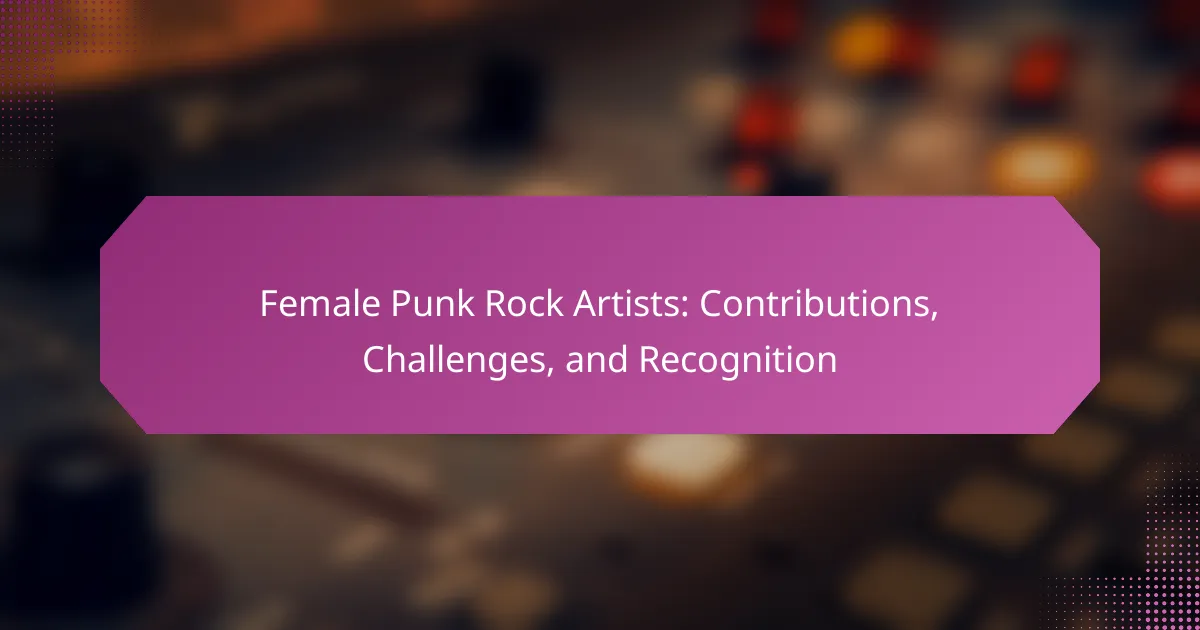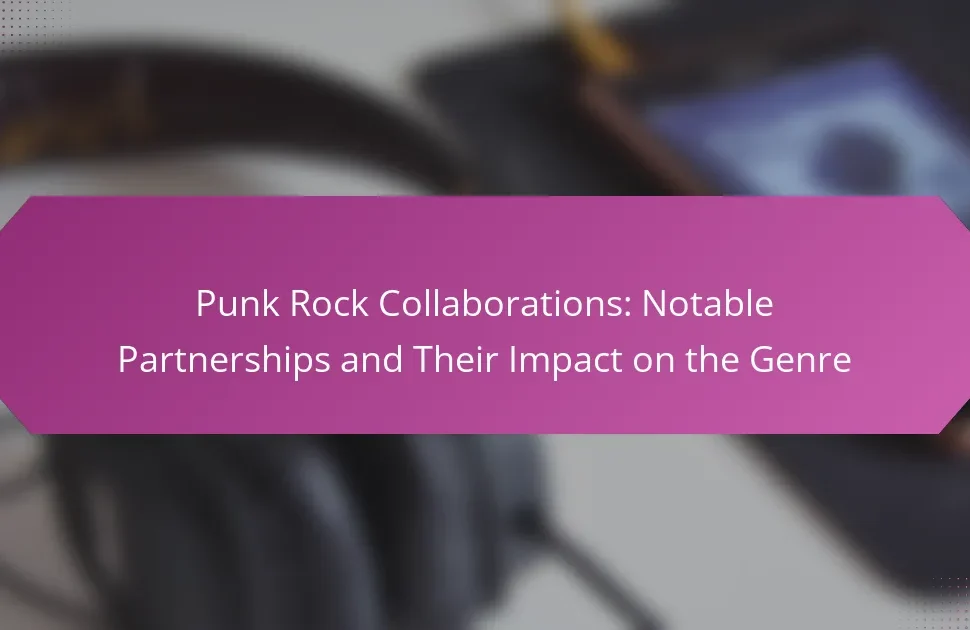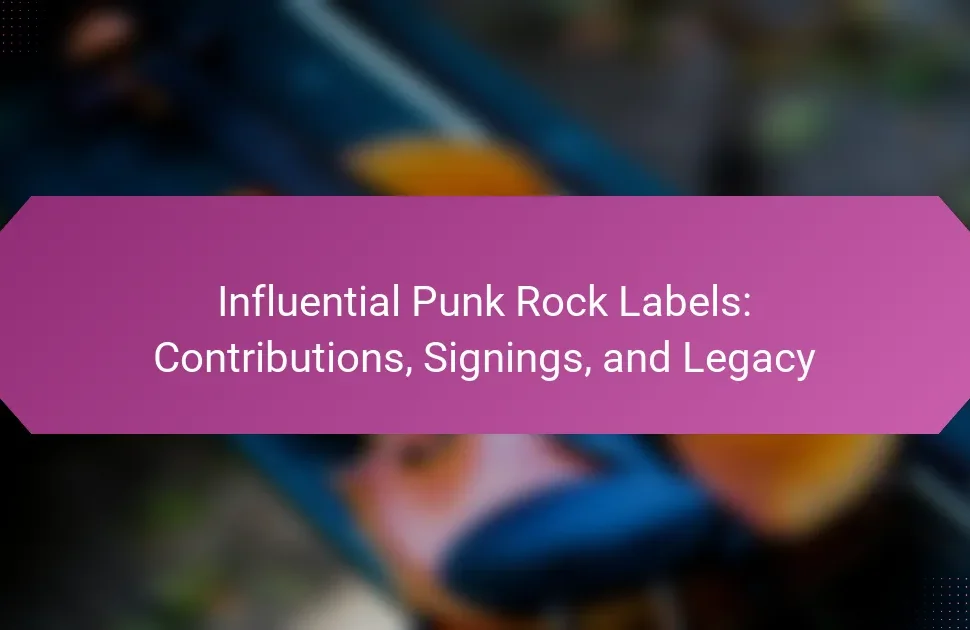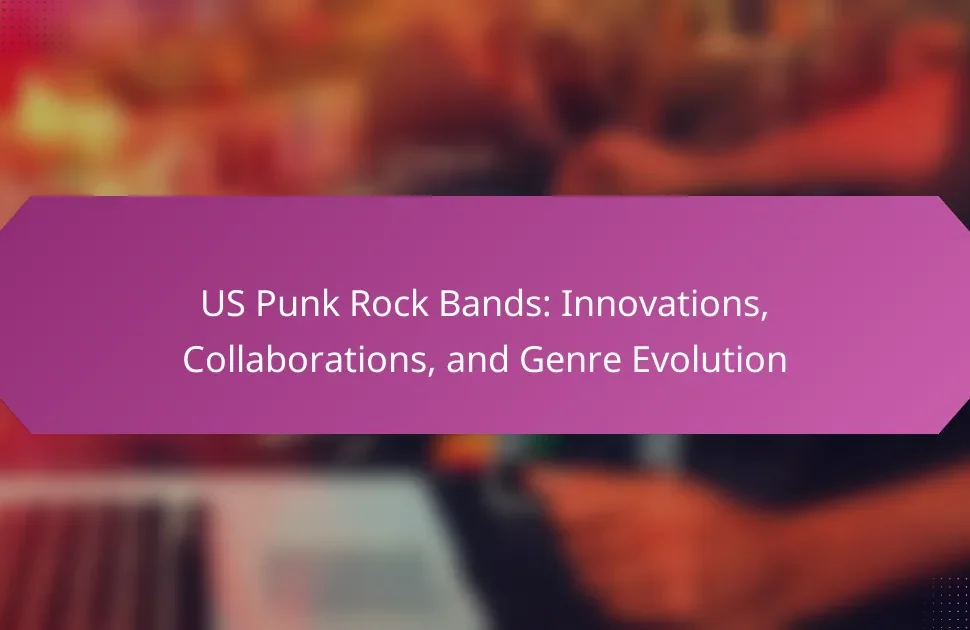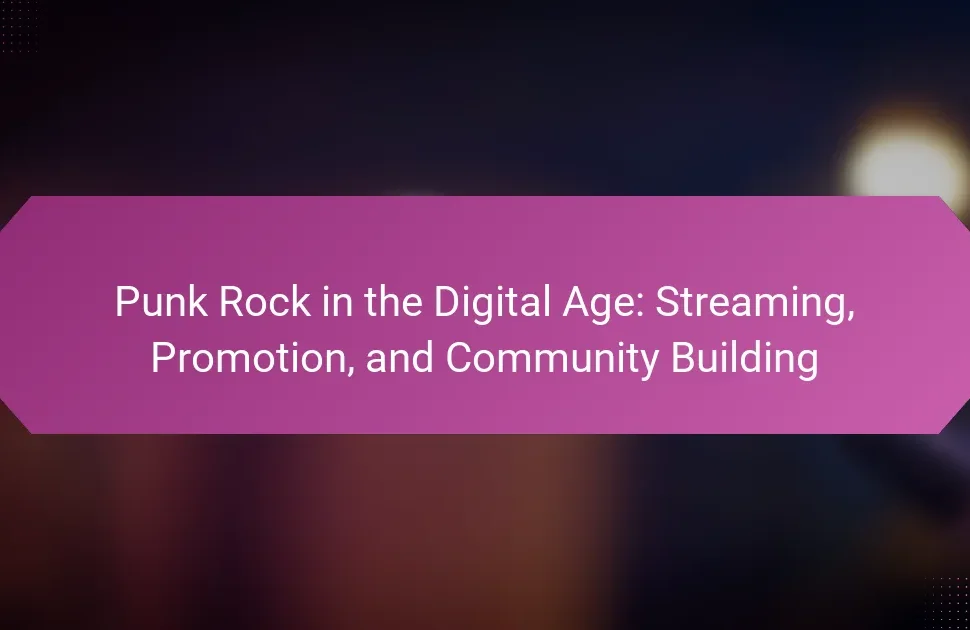Female punk rock artists have reshaped the genre with their innovative sounds and bold lyrics while facing significant challenges like gender discrimination and limited representation. Their contributions are increasingly recognized, with a growing appreciation for their impact on culture and society. Community and collaboration among these artists foster resilience and creativity, leading to greater visibility and advocacy. Emerging trends indicate a fusion of genres and a commitment to activism, reflecting their evolving role in the music landscape.
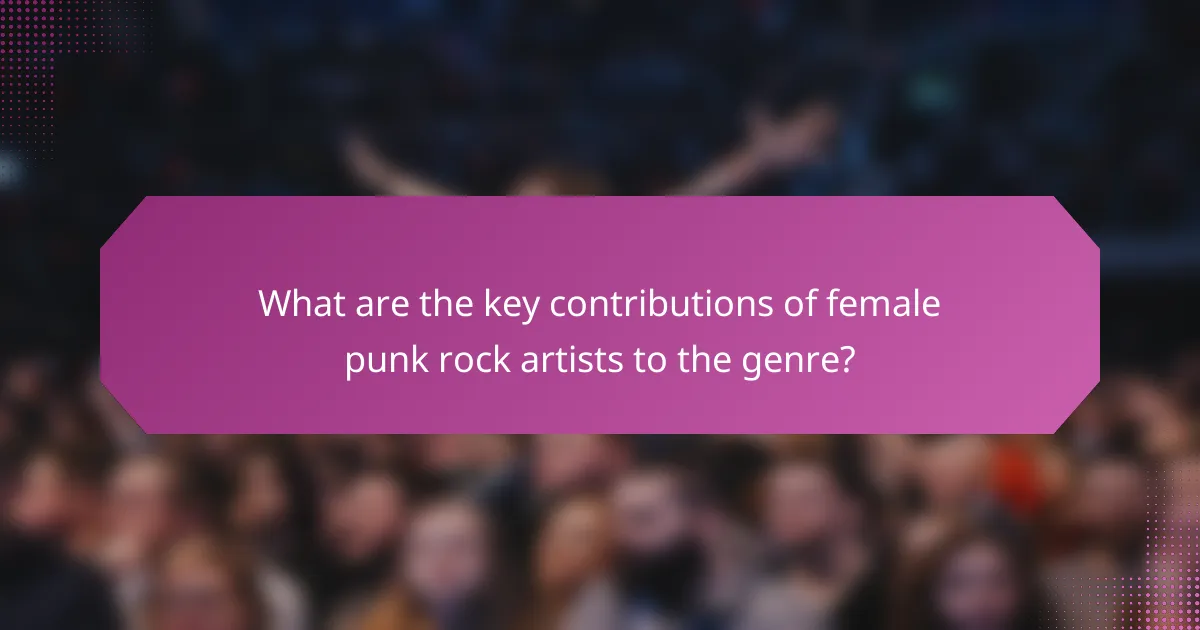
What are the key contributions of female punk rock artists to the genre?
Female punk rock artists significantly shaped the genre through their innovative sounds, bold lyrics, and defiance of societal norms. They challenged gender stereotypes and brought attention to issues like feminism and equality. Artists like Joan Jett and Patti Smith paved the way, inspiring future generations. Their contributions include expanding the punk aesthetic and influencing mainstream music, showcasing the unique attributes of female perspectives in a traditionally male-dominated space.
How have female punk rock artists influenced music and culture?
Female punk rock artists have significantly influenced music and culture by challenging societal norms and empowering future generations. They have introduced unique sounds and perspectives, reshaping the punk genre. Artists like Joan Jett and Debbie Harry broke barriers in a male-dominated industry, showcasing strength and individuality. Their contributions extend beyond music, impacting fashion and feminist movements. The recognition of female punk artists continues to grow, inspiring new waves of musicians to embrace authenticity and rebellion.
Which notable female punk rock artists have shaped the scene?
Notable female punk rock artists like Joan Jett, Debbie Harry, and Poly Styrene have significantly shaped the scene. They broke barriers and inspired future generations. Joan Jett is known for her powerful anthems and entrepreneurial spirit, while Debbie Harry brought a unique style and presence to the genre. Poly Styrene’s distinct voice and activism highlighted social issues, making her a rare figure in punk history. These artists faced challenges such as sexism and industry bias but gained recognition for their contributions, influencing both music and culture.
What are the defining characteristics of female-led punk bands?
Female-led punk bands are characterized by their defiance of gender norms, strong lyrical themes, and influential contributions to the genre. They often challenge societal expectations and address issues like feminism and identity. Notable examples include bands like The Runaways and Bikini Kill, who paved the way for future artists. Their unique attributes include a focus on empowerment and authenticity, which resonate with diverse audiences. The recognition of female punk artists has grown, yet they still face challenges in a male-dominated industry.
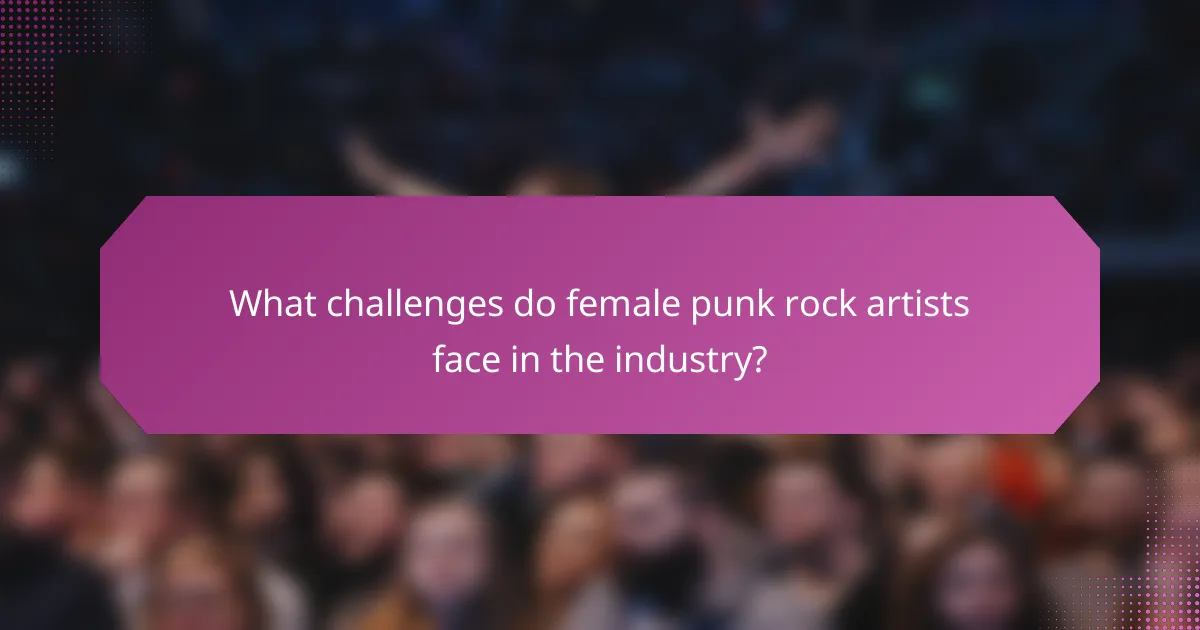
What challenges do female punk rock artists face in the industry?
Female punk rock artists face significant challenges, including gender discrimination, lack of representation, and limited access to industry resources. These obstacles hinder their visibility and opportunities. Additionally, societal stereotypes often undermine their contributions, leading to a struggle for recognition. The unique attribute of resilience among these artists fuels their determination to succeed despite these barriers.
How do societal expectations impact female punk artists?
Societal expectations significantly shape the experiences of female punk artists. These artists often face pressure to conform to traditional gender roles while challenging norms through their music and image.
Female punk artists contribute to the genre by introducing diverse perspectives and themes, often addressing issues like feminism, identity, and empowerment. However, they encounter challenges such as sexism and limited recognition in a male-dominated industry.
As a result, many female punk artists adopt unique styles and messages to assert their identities and resist societal constraints. This defiance not only enriches the punk genre but also inspires new generations of female musicians.
Recognition for female punk artists is growing, yet disparities remain. Their contributions are increasingly acknowledged in music festivals and award shows, reflecting a shift in societal attitudes towards gender equality in music.
What barriers exist for female musicians in punk rock?
Female musicians in punk rock face barriers such as gender bias, lack of representation, and limited access to resources. These challenges hinder their visibility and opportunities within the genre. Gender stereotypes often lead to underestimation of their talent, while the male-dominated industry creates obstacles for networking and collaboration. Additionally, female artists frequently encounter difficulties in securing funding and support, impacting their ability to produce and promote their music.
How do female punk rock artists navigate sexism in the music industry?
Female punk rock artists navigate sexism by asserting their presence and challenging stereotypes. They create supportive communities, use their platforms for activism, and leverage their art to express resistance. Many face unique obstacles, including unequal representation and industry bias. As a result, they often redefine punk culture while gaining recognition for their contributions.
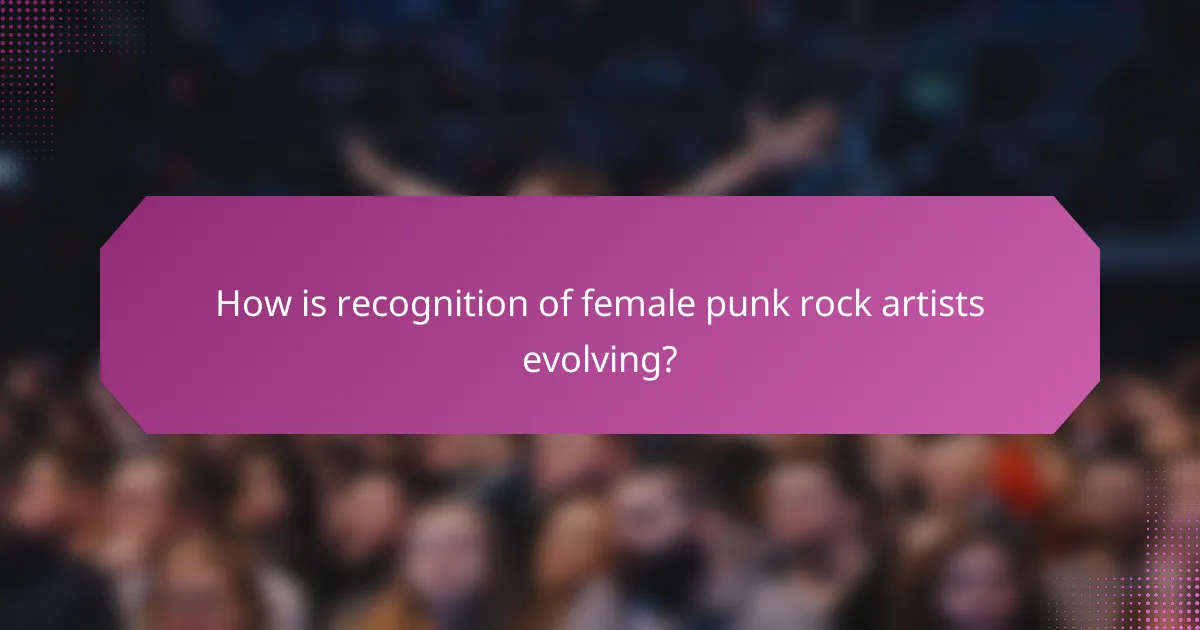
How is recognition of female punk rock artists evolving?
Recognition of female punk rock artists is evolving positively, with increased visibility and appreciation for their contributions. Historically, female artists faced significant challenges in a male-dominated genre. However, recent movements and social media platforms have amplified their voices and stories. Notable figures like Joan Jett and Debbie Harry have paved the way, while emerging artists continue to innovate. The rise of feminist punk scenes and inclusive festivals highlights this shift, showcasing diverse talents and perspectives. As a result, female punk rock artists are gaining recognition not only for their music but also for their impact on culture and society.
What awards and accolades have female punk rock artists received?
Female punk rock artists have received numerous awards and accolades, highlighting their impact. Notable recognitions include Grammy Awards, MTV Video Music Awards, and induction into the Rock and Roll Hall of Fame. Artists like Joan Jett, Patti Smith, and the members of The Runaways have been celebrated for their contributions, influencing generations. Their recognition showcases the unique challenges they faced in a male-dominated genre, making their achievements even more significant.
How do media portrayals affect the visibility of female punk rock artists?
Media portrayals significantly influence the visibility of female punk rock artists by shaping public perception and recognition. Historically, mainstream media has often marginalized these artists, focusing more on male counterparts. This imbalance can lead to underrepresentation in music festivals, award nominations, and media coverage.
Moreover, the portrayal of female punk artists often emphasizes stereotypes, which can limit their appeal and marketability. As a result, many talented female musicians struggle to gain the same visibility as their male peers.
However, recent shifts in media narratives have begun to highlight the contributions of female punk rock artists, showcasing their unique attributes and perspectives. This change is crucial for fostering a more inclusive music scene.
Increased visibility can lead to greater opportunities for collaboration, performance, and audience engagement, ultimately enriching the punk rock genre as a whole.
Which platforms are most effective for promoting female punk rock artists?
Social media platforms, particularly Instagram and TikTok, are most effective for promoting female punk rock artists. These platforms foster visual and engaging content, allowing artists to showcase their music and style directly to fans.
Additionally, Bandcamp serves as a vital platform for independent female punk rock artists, enabling direct sales and fan interaction. YouTube remains essential for music videos and live performances, enhancing visibility.
Moreover, platforms like Spotify and SoundCloud facilitate streaming, helping artists reach wider audiences through curated playlists and recommendations.
Finally, Facebook groups dedicated to punk music can provide community support and networking opportunities, enhancing promotion efforts.
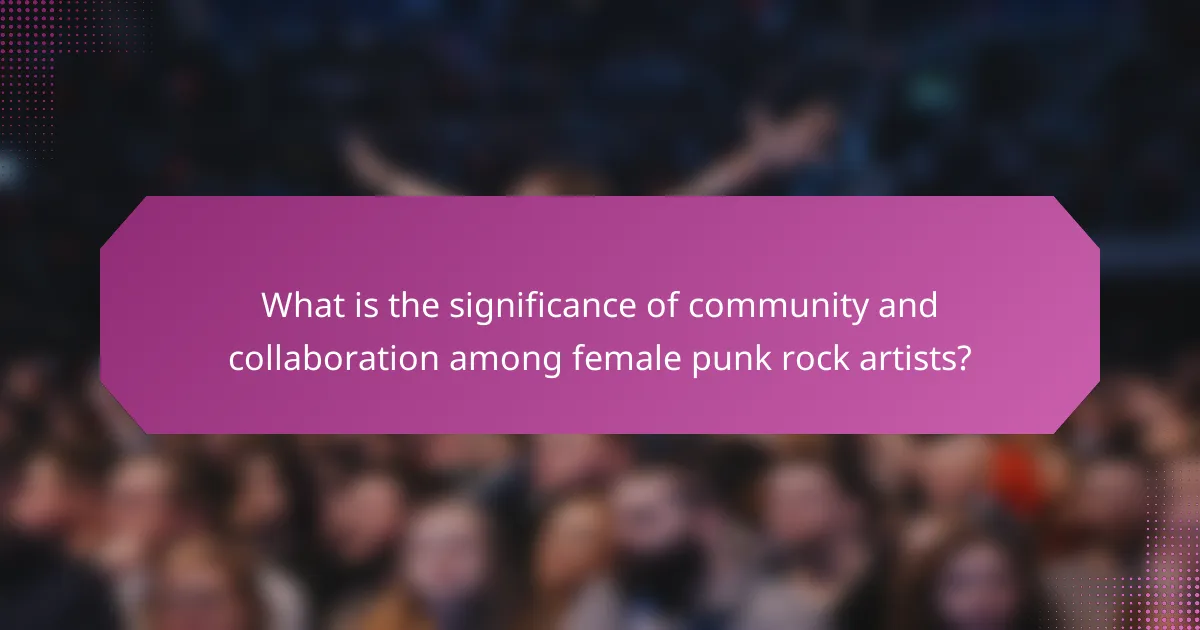
What is the significance of community and collaboration among female punk rock artists?
Community and collaboration among female punk rock artists are vital for fostering creativity and resilience. These artists often face unique challenges, including gender discrimination and limited visibility. By supporting each other, they amplify their voices and share resources, creating a stronger network. This collaboration leads to innovative music and greater recognition within the industry, enhancing their collective impact. Additionally, the shared experiences and solidarity among female punk rock artists cultivate a space for empowerment and advocacy, allowing them to challenge societal norms effectively.
How do female punk rock artists support each other in the industry?
Female punk rock artists support each other through collaboration, mentorship, and community-building. They create networks that amplify their voices and share resources. Many participate in all-female festivals and benefit from platforms that highlight their contributions. This solidarity fosters resilience against industry challenges, such as sexism and underrepresentation. Additionally, artists often share their experiences and advice on social media, further strengthening their bonds and visibility in the music scene.
What role do female punk rock collectives play in empowerment?
Female punk rock collectives play a vital role in empowerment by fostering community, promoting self-expression, and challenging societal norms. These collectives provide a platform for women to share their voices and experiences, often addressing issues like gender equality and personal freedom. They create safe spaces for collaboration and support, helping female artists navigate the music industry. Notably, collectives like Riot Grrrl have historically influenced feminist movements, emphasizing activism through music. This unique attribute of combining art with advocacy enhances their impact on cultural and social change.
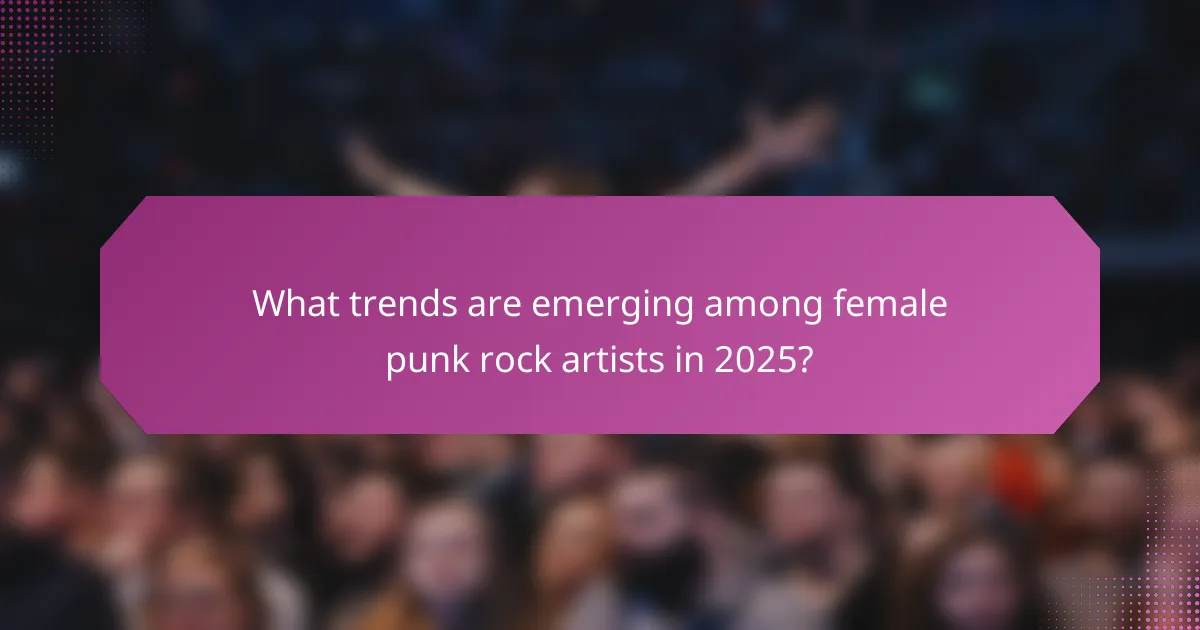
What trends are emerging among female punk rock artists in 2025?
Emerging trends among female punk rock artists in 2025 include increased visibility, genre fusion, and activism. Female artists are gaining recognition for blending punk with other genres, creating diverse sounds. Additionally, they are using their platforms to advocate for social issues, reflecting a commitment to activism. This shift is fostering a supportive community, encouraging collaboration among artists. The rise of digital media is amplifying their voices, allowing for broader reach and engagement with audiences.
How are new technologies influencing female punk rock music?
New technologies are significantly enhancing female punk rock music by amplifying artists’ voices and expanding their reach. Digital platforms allow for greater distribution, enabling female artists to share their music globally without traditional barriers. Social media fosters community and engagement, allowing for direct interaction with fans. Additionally, technology facilitates collaboration across geographical boundaries, leading to innovative sounds and diverse influences. As a result, female punk rock artists are gaining increased recognition and opportunities in a historically male-dominated genre.
What themes are prevalent in the lyrics of contemporary female punk rock artists?
Contemporary female punk rock artists often explore themes of empowerment, identity, and social justice. Their lyrics frequently address issues such as gender inequality, mental health, and personal freedom. Many artists use their music to challenge societal norms and advocate for change, reflecting a unique blend of personal and political narratives. This thematic focus resonates with audiences seeking authenticity and connection in a rapidly changing world.
How are female punk rock artists addressing social issues through their music?
Female punk rock artists are addressing social issues through their music by using powerful lyrics and energetic performances. They tackle themes such as gender equality, mental health, and social justice, often drawing from personal experiences. Artists like Brody Dalle and Kathleen Hanna have been pivotal in raising awareness and fostering community action. Their work not only challenges societal norms but also inspires listeners to engage in activism, making their contributions both impactful and essential in contemporary music culture.
What best practices can female punk rock artists adopt for success?
Female punk rock artists can achieve success by embracing authenticity, building strong networks, and leveraging social media. Authenticity fosters a genuine connection with audiences, while strong networks provide support and collaboration opportunities. Social media serves as a powerful platform for self-promotion and fan engagement. Additionally, participating in female-led initiatives can enhance visibility and recognition in the music industry.
